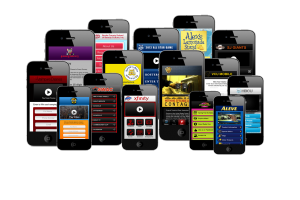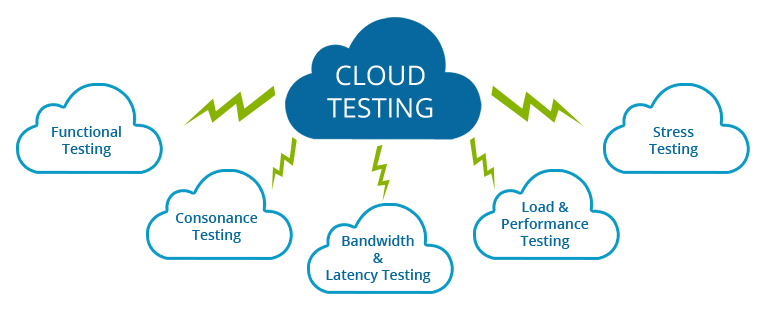2014 has become the battleground between two competing trends in software QA testing. On the one hand, some companies are integrating testing earlier in the development cycle with testing methods like Agile. This often involves companies establishing a Testing Center of Excellence (TCOE) to coordinate testing methodologies with business development in order to build products reliably from the ground up. The other trend is toward independent testing options, either via a third-party firm or crowdsourced testers. Independent testing can offer greater testing coverage and costs less than an in-house QA team.
There are several factors driving this split in 2014. First and foremost, the percentage of IT budgets dedicated to QA testing is rising quickly. The World Quality Report 2013-2014 was jointly produced by Capgemini, Sogeti, and HP from interviews with 1500 CIOs, VPs of applications, IT directors, and QA/Testing managers. This report revealed that 23% of IT budgets went to QA in 2013. This percentage is up from 18% in 2012, and is predicted to reach 28% by 2015.
Mobile Development
Another factor driving QA development is the mobile market. Mobile devices have become a major part of many  organizations’ digital development strategy, but many businesses lack the testing specialists, tools, and consistent methodology needed for effective mobile development.
organizations’ digital development strategy, but many businesses lack the testing specialists, tools, and consistent methodology needed for effective mobile development.
Mobile market growth is nothing new; the mobile industry has been skyrocketing for several years, as consumers spend more time on multiple devices and consume mobile-only content. But, in 2014 the gap between business interest and software QA resources became more defined.
According to the World Quality Report, 55% of organizations now test mobile apps, up from 31% last year. Yet, 56% lack effective testing procedures. In an industry notorious for fragmentation, 52% lack the devices they need for comprehensive testing. 48% lack mobile experts, and 38% lack in-house testing environments.
Security also remains a key consideration for mobile testing. With a growing number of devices interacting in the Internet of Things, safety must be a top concern in QA without compromising the very mobility and wireless access that enable mobile devices.
While increased mobile usage remains the future for consumers, businesses have yet to develop effective testing procedures that can achieve effective test coverage without falling prey to the accelerating development lifecycle.
STOP: Remove errors in your email campaign through MyCrowd Email Testing.
Cloud Development and Cloud Testing
Predictions of cloud growth vary, but some forecast that 36% of software will be hosted on the cloud by 2015. Businesses increasingly demand QA testing for cloud computing services like SaaS, PaaS, and IaaS.
 However, as QA enters 2014, cloud adoption has slowed due to concerns over security and performance. A quarter of respondents in the World Quality Report revealed that their businesses had no clear approach for cloud applications.
However, as QA enters 2014, cloud adoption has slowed due to concerns over security and performance. A quarter of respondents in the World Quality Report revealed that their businesses had no clear approach for cloud applications.
Still, businesses are not shrinking from the call of cloud computing. Transformational projects represent a major percentage of IT work in 2014. Like mobile development, cloud computing demands more from in-house software QA teams. This makes Testing as a Service (TaaS) increasingly attractive for businesses hoping to navigate to the cloud.
Meanwhile, cloud-based testing allows businesses or testing vendors to perform QA on a greater range of interfaces without the burden of fragmented hardware. Cloud testing is also flexible, allowing businesses to scale up or down as part of a dynamic testing strategy.
Fragmentation, Integration, and Context-Driven Testing
As devices simultaneously become more diverse and tightly integrated, it may be difficult for QA teams to build a consistent testing strategy. This has given rise to the idea of context-based testing. Those testers better able to adapt to specific contexts will succeed, while the one-size-fits all model falls out of style.
Context-driven testing may address the fragmentation borne of SoLoMo (Social Media, Localization, Mobility). Working independently, a group of diverse context-based testers can achieve greater “surface area” coverage by approaching integrated software systems from multiple angles. This will ensure that security and reliability are maintained across data connections and interfaces. It also obviates the need for businesses to maintain central hubs of hardware, middleware, and test environments (coverage that has become essentially impossible).
QA Trend #1: Integrated Testing
Nearly half of the businesses in the World Quality Report integrate testing in the development lifecycle too late (during or after development phases). This has led some enterprises to commit to greater in-house QA integration. TCOEs are popular, and allow IT departments to standardize testing methods, automate processes, and compile metrics. Agile testing methodology is also popular.
Both of these integration options are made possible by better automation tools. Automation was once limited to regression testing, but can now be used in load and unit tests. While testing scripts let QA teams scale up testing methods, automated testing can never truly replace the agility and creativity of a manual tester. Furthermore, 54% of responders to the World Quality Report can’t perform automated testing at effective levels.
Meanwhile, many businesses also report trouble integrating Agile into development environments. Testing throughout a development cycle may ensure greater reliability in theory, but in practice, such integration also makes QA teams vulnerable to business interests and schedules that might hinder testing. Some businesses also have trouble identifying testing areas earlier in the development process.
QA Trend #2: Independent Software Testing
Since 2011, the costs involved in QA testing have put pressure on businesses to outsource. The independent testing industry is set to enjoy 9.5% annual growth until 2018, according to a report from business research firm Nelson Hall. The National Association of Software and Services Companies (NASSCOM), an Indian trade association, reports that much of that increased business will go offshore, with India receiving the greatest share.
While many companies seek to cut costs with third-party testing firms, the quality of these firms is debatable. Since it is often difficult to determine the effectiveness of specific testing methods, cost is often the primary factor in outsourced testing. This creates a lemon market, as companies rush to the bottom of the cost spectrum heedless of testing quality. While this is not true of all independent testing firms, it is certainly a concern for businesses looking to outsource.
QA Trend #3: Crowdsourced Testing
Crowd testing became a popular option in 2013, and that trend has continued in 2014. Crowd testing allows  businesses to cut costs by only paying for effective testing. Companies like MyCrowd offer crowdsourcing on a bounty system, allowing businesses to pay only for bugs discovered and resolved. MyCrowd is designed as a turnkey solution for e-commerce and SaaS companies, providing a cheaper alternative to costly in-house QA.
businesses to cut costs by only paying for effective testing. Companies like MyCrowd offer crowdsourcing on a bounty system, allowing businesses to pay only for bugs discovered and resolved. MyCrowd is designed as a turnkey solution for e-commerce and SaaS companies, providing a cheaper alternative to costly in-house QA.
Crowdsourcing models like MyCrowd and UserTesting.com also boost effectiveness, since testers have an incentive to boost success rates instead of wasting an IT budget. Crowdsourcing also provides a solution to localization and fragmentation, giving businesses ample testing coverage without restricting development cycles.
As technological innovation continues to make impossible demands on software QA teams, some businesses may be tempted to rush development at the cost of quality. But, software QA is quickly catching up to the latest digital trends, so quality cannot simply be a fantasy. Businesses cannot ignore end user satisfaction.
Whether businesses choose to integrate testing in the development cycle with TCOEs, outsource testing to an independent testing firm, or take advantage of crowdsourcing options like MyCrowd, 2014 is bound to be a heated and exciting time in QA testing.


